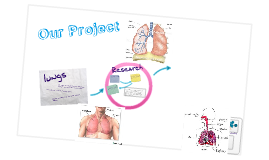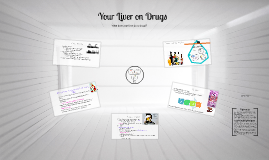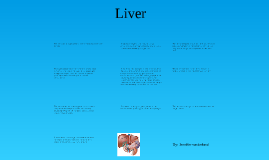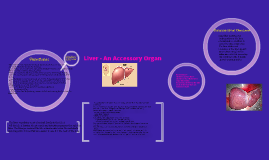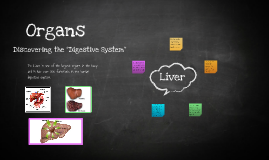Liver
Transcript: Examined Thompsons Micromedex Drugdex System and the Swedish Adverse Drug Advisory Committee databases Statistically significant relationship found between daily dose and poor outcome (death or liver transplant) in Swedish DILI cases. Non-significant trend in relationship between daily dose and ALTx3 and jaundice. 77% of all serious DILI cases belonged to the 50mg/day or greater group Antibacterials and nonsteroidal anti-inflammatory drugs were overrepresented in the 50mg/day+ group Could be these kinds of drugs, rather than the higher doses that cause the significant differences Ball, K., Kowdley, K. V. (2005). A Review of Silybum marianum (Milk Thistle) as a Treatment for Alcoholic Liver Disease. Journal of Clinical Gastroenterology. Vol. 39 (6) p 520-528. Retreived from http://ovidsp.tx.ovid.com.ezproxy.kwantlen.ca:2080/sp- 3 3.9.0b/ovidweb.cgi?&S= NKAMFPMCJMDDAADCNCOKLGFBHEBEAA00&Abstract=S.sh.22%7c1%7c1 Canadian Liver Foundation. (2013). Liver Disease. Retrieved July 20, 2013 from http://www.liver.ca/liver-disease/ Hackett, E. S., Twedt, D. C., & Gustafson, D. L., (2013). Milk Thistle and its Derivative Compounds: A Review of Opportunities for Treatment of Liver Disease. Journal of Veterinary Internal Medicine. Vlume 27(1) . Retreived from http://onlinelibrary.wiley.com.ezproxy.kwantlen.ca:2080/doi/10.1111/jvim.12002/pdf Hood, B. & Nowicki, M. J. (2010). Eosinophilic Hepatitis in an Adolescent During Lisdexamfetamin Dimesylate Treatment for ADHD. Pediatrics. 2010(125) 1510-1513. doi:10.1542/peds.2009-1835 Lammert, C., Einarsson, S., saha, C., Niklasson, A., Bjornsson, E., Chalasani, N. (2009). Relationship between daily dose of Oral Medications and Idiosyncratic drug-induced liver injury: Search for signals. Hepatology, Vol. 2008 (47), 2003-2009. doi.10.1002/hep.22272 Loguercio, C., and Festi, D. (2011). Silybin and the liver: From basic research to clinical practice. World Journal of Gastroenterology 12(18)2288-2301. doi:10.3748/wjg.v17.i18.2288 Szabo, G., & Pranoti, M. (2010). Focus on: Alcohol and the liver. Alcohol research & health Vol. 33(1) 87-96. Retrieved from http://ezproxy.kwantlen.ca:2048/login?url=http://search.proquest.com.ezproxy.kwantlen.ca:2080/docview/745600472?accountid=35875 Vanga, R. R., Bal, B., & Olden, K. W. (2013). Adderall Induced Acute Liver Injury: A Rare Case and Review of the Literature. Case Reports in Gastrointestinal Medicine, 2013 . Retreived from http.//dx.doi.org/10 .1155/2013/902892 11-49mg/day 32%* References Your Liver on Drugs Alcohol disrupts the intestines healthy microbial flora acetalydehyde (alcohol metabolite) disrupts proteins in cell walls in the gut degrades gut barrier causes leaky gut Too much endotoxin bacteria makes it to the liver Endotoxin interacts with Kupffer cells Causes secretion of cytokines and chemokines promoting inflammatory responses Chronic inflammation leads to hepatitis, fibrosis, cirrhosis Apoptosis (programmed cell death) Eliminates unneeded hepatocytes and damaged DNA Stop drinking!!! Alcohol Alcoholic liver disease (ALD) One of the leading causes of alcohol-related death 12th leading cause of death in USA your poor liver... Whilst you are sporting a happy drunk glow on the outside... Oxidative Stress Immune Response 11% Pemoline (Cylert) removed from the market due to liver-injury fatalities Hood & Nowicki (2010) case study Atomoxetine (SNRI) treats ADHD in children 14 yr old 2010, eosinophilic hepatitis via lisdexamfetamine dimesylate (D-amphetamine) taking regular dose for five months no family history of liver problems Venga, Bal, & Olden (2013) case study Adderall induced acute liver injury 55 yr old Took 2x prescribed amount of Adderall for 5 days, took with other drugs including aspirin 12% 50mg/day + Gut-Liver Axis 14%* 11-49mg/day “Chemical Factory” Contains molecules called enzymes Eg: alcohol dehydrogenase First pass metabolism Enzymes change other molecules Metabolism (detoxification) Metabolites (less harmful, more useful) Amount of enzyme available determines this process Cirrhosis Liver Review One of the most frequent causes of acute liver failure in the US Generally thought to be unpredictable and not dose-dependent Hypersensitivity, metabolic idiosyncracy HowEVER: Most drugs withdrawn from the market or have warnings for hepatoxicity have prescribed daily doses of more than 50mg Which drugs are harder on your liver: antidepressants, anxiolytics, anti-inflammatories or antibiotics? AHDH medicines are known to cause hepatic injury Rare cause of idiosyncratic drug reactions in US 13% of toxin induced liver injury In Spain, Amphetamine (and Ecstasy) are the 2nd most common cause of acute hepatitis under 25 years Mechanism Decreased clearance of metabolites Idiopathic hypersensitivity Neoantigen-induced autoimune hepatitis (CYP2D6– isoenzyme) Anti-liver/kidney antibodies Impaired metabolism Genetic mutations of CYP2D6 5-9% of Caucasians, 1-2% of Americans and Asians lack CYP2D6 cannot clear the drug causes liver damage






